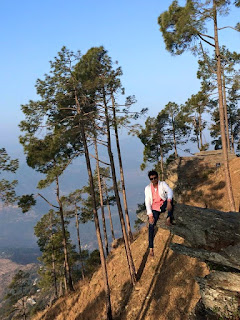| GS CLASS NOTES | SCIENCE | BOTANY For | SSC | BANK EXAM | RRB-NTPC |
By Sant Kumar Sharma (Dev Sharma) - April 07, 2017
Botany
Father of Botany : Theophrastus
Classification of Plants :-
Entire Plant kingdom is divided into Cryptogamae and phanerogamae depending upon the presence or absence of flowers and seeds.
(A) Cryptogamae/Cryptogamus Plants (Plants without seeds)
(B) Phanerogamus/Rhanrogamae/Floral Plant/Spermatophytes
(Plants with seeds).
Cryptogamae/Cryptogamous Plants
- There are no flower and seed in these type of plants.
- All non-flowering plants such as Algae, Fungi, Lichens, Mosses, and Fern are included in Cryptogamae.
Thalophyta
- Largest group of the Plant kingdom.
- They have Thalus like structure (i.e. Plants are not differentiated into root, stem and leaves).
- No conducting tissue.
- Example : Algae and Fungi
ALGAE
- Study of Algae = Phycology
- The Algae normally have chlorophyll and autotrophic mode of nutrition
- Some Algae grow in marinewater and are called Seaweeds.
- Avariety of pigments in Algae provide different colours. The green algae have mainly Chlorophyll-a and Chlorophyll -b along with Carotenoids as photosynthetic pigments
- Algae reproduce vegetatively by fragmentation, Budding or Tuber formation.
- Based on the pigment colours, nature of stored food material and cell organization, Algae are further sub-divided into Green (Chlorophyceae), Brown (Phaeophyceae) and Red (rhoclophyceae) etc.
- It's body is Thalus like
- As a food : Prophyra, Ulva, Surgassum, Laeminaria, Nostoc etc.
- In making Iodine : Laeminaria, Fucus, Echlonia etc.
- As a Manure : Nostoc, Anabaena, Kelp etc.
- In making Medicines : Chlororedoline from Chlorella and Tincher iodine is made from Laeminaria.
- In Research works : Chlorella, Actabularia, Belonia etc.
Key Points # ALGAE
- An astronaut can get protein food, water and oxygen by sowing the Chlorella algae in the tank of the aircraft so Chlorella is also known as "Space Algae".
- Agar-Agar is prepared from Algae.
- Algae are multicellular and Aquatic.
- Algae are green and have Chlorophyll.
- Blue green algae contains a blue pigment and generally a red pigment also, in addition to chlorophyll.
- Blue green algae is also referred to as "Cyanobacteria".
- Nostoc, Anabaena and Oscillatoria are some of the commonly available forms of Blue-Green Algae. They cam also fix atmospheric Nitrogen into usable compounds. That is why these are being commonly used as fertilizers.
- Green algae contain Chlorophyll and Carotene.
- Yellow algae contain yellow pigment.
- Brown algae contain brown pigment which conceal chlorophyll.
- Algae are Autotrophic (i.e. Prepare their own food).
FUNGI
- Study of Fungi = Mycology.
- Fungi are non-green and do not have chlorophyll.
- They are Heterotrophic (i.e. They do not prepare their own Food).
- They have no definite Tissues.
- They grow in soil containing organic matter or directly on dead organic material from which they obtain nourishment i.e "Saprophytic" or "Parasitic".
- Most common Fungi = #Mushrooms, #Moulds, #Puff balls, #Toad balls and #Yeast.
- Yeast are unicellular and Saprophytic Fungi.
- Some Fungal Diseases in Humans = #Aspergilosis, #Thrush, #Cryptocosis, #Hayfever, #Athlete's foot, #Ringworm.
- Accumulated food in fungi remains as 'Glycogen'.
- It's Cell wall is made up of 'Chitin'.
- Fungi may also creates serious disease in plants such as . Most damage in plants is caused by 'Rust' & 'Smut'.
NOTE :- Main Fungal disease in plants are :
- White Rust of crucifer,
- Loose smut of wheat,
- Early blight of potato,
- Red Rot of sugarcane,
- Tikka disease of Groundnut,
- Wart disease of Potato,
- Brown leaf spot of Rice,
- Late blight of Potato.
"Rhizopus" is a Fungi commonly known as " Bread Mould"
Bryophyta
- This is the First group of Land Plants.
- This group derives it's name from the Mosses which grow on the rocks, walls and tree trunks in moist and shady places.
- In Bryophyta there is lack of Xylem and Pholem tissue.
- They lack Roots, Flower and Seeds.
- This group is also called Amphibian category of the Plant kingdom.
- The members of this group reproduce both vegetatively through fragmentation, Gammae and Tubers, as well as by Sexual methods.
Based on the structure of plant body and the method of sexual reproduction, Bryophytes are divided into three categories :
- Hepaticae (Liverwort)
- Anthocerotae (Hornwort)
- Musci
Moss/Mosses
- The Moss namely "Sphagnum" also retain moisture like the 'Sponges'. Therefor, gardeners use it to protect from drying while taking the plants from one place to another.
- The Sphagnum Moss is used as Fuel.
- The Sphagnum Moss is also used as Antiseptic.
KEY POINT :- Water conduction takes place in Mosses through "Parenchyma".
Pteridophyta
- It derives it's name from the 'Fern'.
- They occur in humid and tropical climates and usually grow on soil, rocks, in plants and as epiphytes on other plants. OR
- The plant of this group is mostly found in Wet shady places, forests and mountains.
- The Pteridophytes have primitive vascular system.
- The body of plants is differentiated into Root, Stem and Leaves.
- Reproduction occurs by spores produced inside the Sporangia.
- 'Sporangia' bearing leaf of a fern is called "Sorus".
- Gametophytic phase is short-lived. The diploid zygote develops into an embryo.
- Gametophyte is called 'Prothallus' in Pteridophytes.
- Plants of this group have conducting tissues. But Xylem does not contain vessels and Pholem does not contain companion cells. EXAMPLE : #Ferns, #Azolla, #Pteridium, #Lycopodium etc.
- On the basis of organization of plant body including the nature of leaf, vascular system and location of Sporangia,the Pteridophyta is divided into 4 classes : (1) Psilopsida, (2) Lycopsida, (3) Sphenopsida, (4) Pteropsida.









0 comments